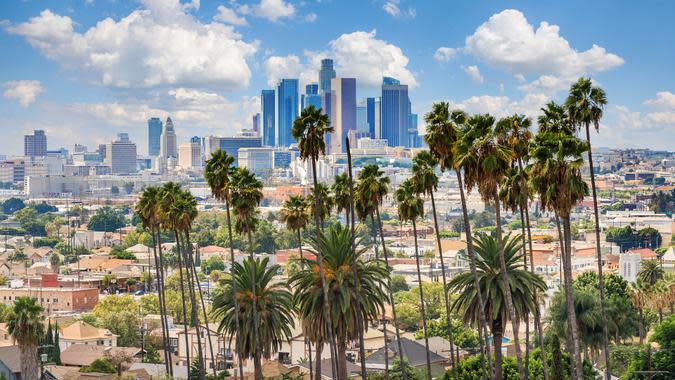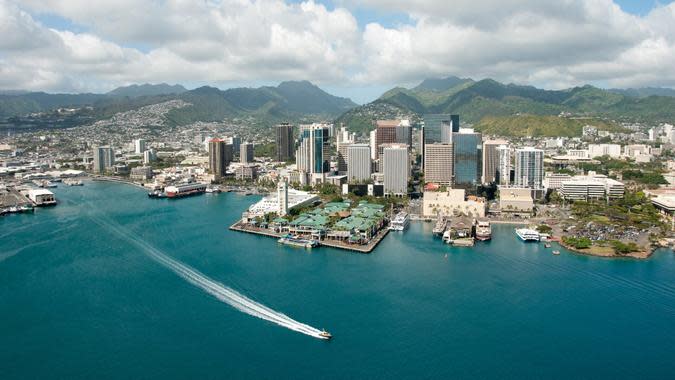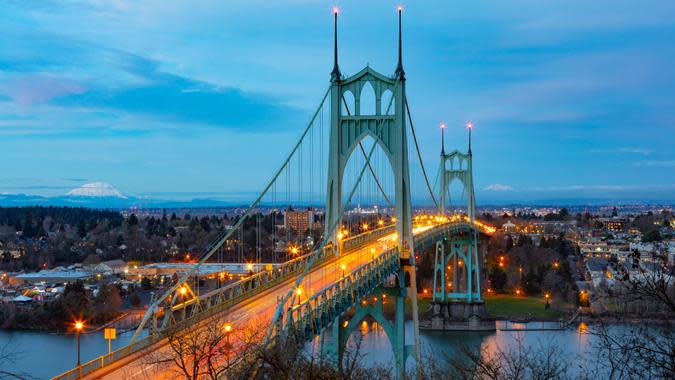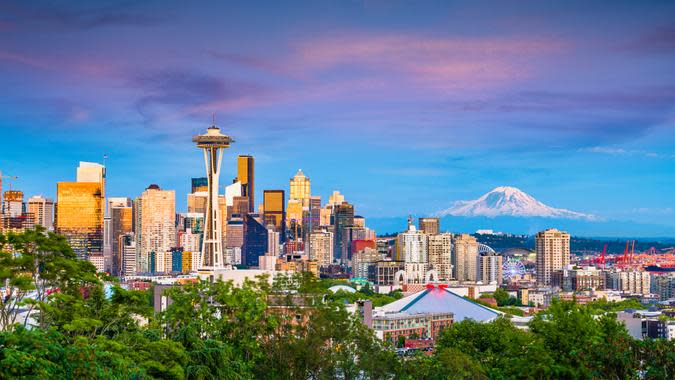How Much You Need To Be ‘Middle Class’ on the West Coast of the US

The five states bordering the Pacific Ocean each feature unique characteristics that appeal to the people who settle there. Despite their vast differences, the states have one thing in common. They aren't cheapest of the United States to live in for sure.
Explore: Here's How Much You Need To Earn To Be 'Rich' in 23 Major Countries Around the World
Be Prepared: 30 Greatest Threats to Your Retirement
But how expensive is it to live along the West Coast? According to the Missouri Economic Research and Information Center, the five states along the Pacific are among the 13 costliest to live in the United States.
GOBankingRates set out to find how much money you need to be considered "middle class on the West Coast, using the Organization for Economic Co-operation and Development (OECD) definition of "middle class" as making 75% to 200% of a median income. GOBankingRates then determined middle class income range on the West Coast by analyzing median wage data sourced from the U.S. Census Bureau's 2020 Income and Poverty report. The average monthly mortgage payments in each state, plus payments for monthly car, student loan and credit card payments then were calculated and figured in.
Read on to see how much you need to learn to lead a middle-class life along the West Coast.
See: States Where It's Easiest To Go From Middle Class to Upper Class

Alaska
Middle income (low end): $57,902
Middle income (high end): $154,406
Mortgage needed for average home (monthly): $1,478
Car loan payment (monthly): $437
Student loan payment (monthly): $207
Credit card payment (monthly minimum): $66
In Alaska, residents of some parts of the 49th state enjoy almost around-the-clock sunshine from late May to late July. Ideal for those who love the outdoors, Alaska has some of the best hiking and fishing in the country in the summer and some of the best snow for winter sports. On top of that, Alaska residents don't pay state income tax or a state sales tax.
Billionaires vs. Middle-Class America: Who Pays More in Taxes?

California
Middle income (low end): $60,317
Middle income (high end): $160,846
Mortgage needed for average home (monthly): $3,744
Car loan payment (monthly): $545
Student loan payment (monthly): $221
Credit card payment (monthly minimum): $51
It's insanely expensive to live in California, but that isn't keeping people away from the Golden State. In fact, 2020 U.S. Census figures show that California has about 39.5 million residents, which translates to 11.9% of the 331.5 million people who live in the United States.
Read: 17 Biggest Budgeting Mistakes You're Making

Hawaii
Middle income (low end): $62,801
Middle income (high end): $167,468
Mortgage needed for average home (monthly): $4,140
Car loan payment (monthly): $442
Student loan payment (monthly): $200
Credit card payment (monthly minimum): $56
It's even more expensive to live in Hawaii than it is in California. In fact, you'll to bring home almost $5,000 each month to afford your monthly payments for your mortgage, car loan, student loan and credit card.
Check Out: Best Cities To Retire on a Budget of $1,500 a Month

Oregon
Middle income (low end): $50,216
Middle income (high end): $133,910
Mortgage needed for average home (monthly): $2,248
Car loan payment (monthly): $414
Student loan payment (monthly): $215
Credit card payment (monthly minimum): $47
Oregon has a couple of perks enjoyed by all adult residents. First, state law requires attendants at service station pump your gas for you, plus there's no state sales tax. The state also has an extensive collection of scenic bikeways that will take bicyclists through forests, on bike trails or along the coastline.
More: Tips To Keep Your Finances in Order Without Sacrificing What You Want

Washington
Middle income (low end): $59,006
Middle income (high end): $157,348
Mortgage needed for average home (monthly): $2,773
Car loan payment (monthly): $482
Student loan payment (monthly): $212
Credit card payment (monthly minimum): $52
Whether you want access to jobs or the great outdoors, you'll find it in Washington. The state is the home of the corporate headquarters of a number of major corporations, including Amazon, Alaska Air Group, Costco, Microsoft, Nordstrom, Starbucks and the Weyerhaeuser Co. On your days off, drink in Washington's famed coffee and food scene, or hit one of parks, such as Mount Rainier National Park or Olympic National Park. There's no state income tax in Washington, either.
More From GOBankingRates
Social Security 2022: How the COLA Will Increase Benefits for the Average Senior Couple
This Free Tool Automatically Checks for the Best Deal on Amazon
Methodology: For this study, GOBankingRates applied (1) the Organization for Economic Co-operation and Development (OECD) definition of "middle class" as making 75% to 200% of a median income. GOBankingRates then determined middle class income range on the West Coast by (2) analyzing median wage data sourced from the Census Bureau's 2020 Income and Poverty report and multiplied the incomes by 0.75 for lowest threshold and by 2 for upper threshold. GOBankingRates found (3) average monthly mortgage payments by applying data sourced from Zillow's Home Value Index to a 30-year fixed mortgage at a 3.43% interest rate (not accounting for individual variables such as down payment, taxes, PMI and insurance). GOBankingRates further utilized data from (4) LendEDU, which analyzed aggregated anonymized data from 150,000 Truebill users, to determine average student loan payments; (5) U.S. News & World Report's breakdown of car ownership by geography to determine monthly car payments; and (6) Experian's Consumer Debt Study of average credit card debt, multiplied by 1% (the minimum monthly payment required by most major credit cards) to determine monthly credit card payments. Data is accurate as of Nov. 5, 2021.
This article originally appeared on GOBankingRates.com: How Much You Need To Be ‘Middle Class’ on the West Coast of the US

